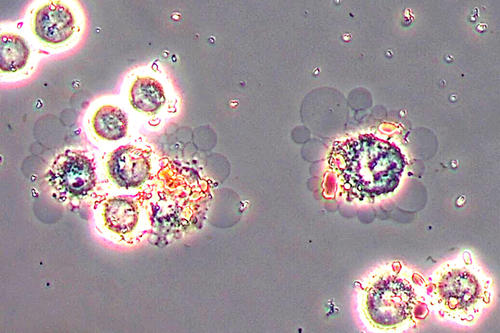
The deadliest of cancers, lung cancer accounts for about 27 percent of all cancer deaths. Scientists battling the disease are searching for a drug that will target tumor cells, leaving healthy cells largely unscathed.
A new treatment from U researchers Jayanth Panyam, Timothy Wiedmann, and Tanmoy Sadhukha shows promise. They injected tumors in mice with nanoparticles of iron oxide that heat up and move when subjected to an oscillating magnetic field. He found that heat from aggregates of the nanoparticles killed nearby cancer cells, and also that the motion of the larger aggregates—still only about a micron, or a millionth of a meter, in diameter—ripped open cell membranes and killed faster. If the treatment were to be used in patients, the nanoparticles would probably be attached to small proteins that specifically bind to cancer cells; this would protect most healthy cells from both heat and marauding nanoparticles.
Because the nanoparticles can’t penetrate a solid tumor, Panyam’s team is working on a cocktail of proteins to help them get inside the growths. He predicts they would likely be used in combination with other treatments.
This story is just one example of how U of M researchers are vaulting over what were once insurmountable barriers to treating deadly diseases and meeting other looming challenges to society. Read about a kindred technology’s stunning success in treating a patient’s cancer, and check out more tales of break-the-mold progress U researchers have achieved.
- Categories:
- Science and Technology





